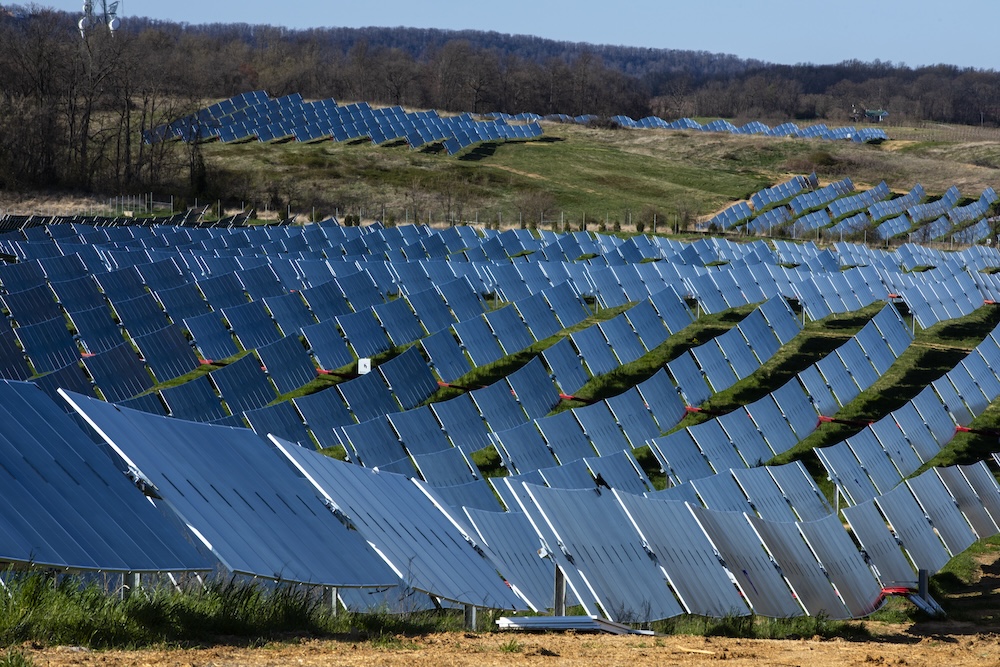Flat terrain has historically been a prerequisite for utility-scale solar projects. However, the stock of flat greenfield solar sites is dwindling in the U.S., especially in regions with high solar penetration rates or hills. As a result, many developers and engineering, procurement, and construction (EPC) companies have turned to mass grading as a solution.
Solar site grading involves flattening the natural landscape to accommodate ground-mounted arrays. This approach carries substantial risks, particularly as developers expand into areas with more uneven terrain.
What Is Solar Site Grading?
Put simply, solar site grading is the process of preparing a site for the installation of a solar system. It involves various earth-moving and leveling activities to bring the topography within suitable limits for the solar array and its racking components. This can include:
- Cut-and-fill excavation – Dirt from raised areas is removed and used to fill in low-lying areas on the site. Occasionally, additional dirt needs to be brought in from off site or excess dirt needs to be trucked away and disposed of elsewhere. Typically, top soil is set aside and then replaced after the underlying earth is excavated in an effort to retain the soil nutrients. This practice has varying degrees of success in the real world.
- Clearing – Debris, trees, shrubs, and other vegetation are removed from the site.
- Compaction – The soil is compacted to increase its load-bearing capacity and stability.
- Revegetation – The area is reseeded to replace vegetation and improve soil stability.
Solar site grading is expensive, time-consuming, and has a negative impact on the environment. The extent of this practice increase for sites with more hilly terrain. Unfortunately, these kinds of sites are becoming more common as the utility-scale solar market expands to new areas throughout the United States.
What Are the Impacts of Solar Site Grading?
Grading can seriously disturb the land and cause lasting damage to the environment. Large-scale solar projects transform the landscapes they occupy, essentially creating new types of built environments.
When a site’s topography is altered, so is its natural drainage. This can lead to soil erosion and sediment runoff into nearby areas and waterways. Too much soil in bodies of water can disrupt local ecosystems, hurt the plants and animals that live in them, and damage drinking water treatment systems.
Other effects of solar site grading include:
- Altered soil structure: Centuries of soil structure development can be obliterated after grading, reducing the natural stability of the land.
- Disruption of established vegetation: The delicate symbiotic relationships between existing vegetation and the soil are often severed to enable solar site construction.
- Project delays: Modern projects are at risk of costly delays due to issues stemming from grading. For example, in many areas of the U.S. grading and revegetation cannot be performed in the winter months. Soil stabilization challenges and Stormwater Pollution Prevention Plan (SWPPP) violations are prime examples.
- Community relations: Community members may protest or push back against solar projects that require extensive land disturbances.
How To Balance Costs and Environmental Impact in Solar Grading Projects
Due to the increased upfront costs and risks associated with grading, these projects often have worse economics. When combined with the potential environmental and community “costs” of grading, it’s clear that utility-scale solar projects need a better solution.
Many utility-scale projects use standard single-axis solar trackers to boost output and improve site viability. But it’s important to realize that these conventional tracking systems were initially designed for flat terrain and they aren’t well-suited for sloped or uneven landscapes.
Eliminate Grading with the All-Terrain Solar Tracker
Advancements in solar tracking technology now allow you to make the most of varied terrain by eliminating the need for grading. The Nevados All Terrain Tracker® (ATT®) has a total slope tolerance of up to 37% and can accept angle changes of up to 26% between posts. This means that developers and EPCs can eliminate grading and streamline construction even for sites with naturally undulating terrain.
To learn more about how Nevados is helping to eliminate grading and transform utility-scale solar from the ground up, download our whitepaper or contact us today.




